Right before humans started shooting arrows at animals we started curing meat over a fire. It is a multi-millennia strong tradition. But why? Two reasons, really.
The first reason that humans began to cure things is for simple food preservation. Refrigerators and freezers in households are a very recent invention. Prior to these, ice houses and root cellars could keep some items frozen, but at great expense. (Believe it or not, Walden Pond—yes that one from Henry David Thoreau fame—was a huge source of North American ice in the late 1800s.)
But salt, smoke and time are cheap, and that is basically what’s needed for all cured meat. Curing and fermenting are ways of keeping otherwise perishable foods for a longer amount of time. Have more cabbage than you can eat before it goes bad? Make sauerkraut or kimchi over the winter; salt, seasonings and time are all you need. Have more meat that you can eat before it rots? Cure it into ham or pastrami—again, salt and seasoning—or smoke it over the fire for jerky.
The second reason that humans cured meat was because it just tasted good. We are naturally predisposed to love salt. A pastrami on rye? A ham and brie sandwich? A peperoni pizza? All preserved meat dishes, all classics, all delicious.
It is for those reason that curing meat at home – especially game animals – is an awesome asset. Knowing how to preserve meat at home is a valuable “SHTF” skill as well as a culinary accomplishment. Quite possibly the easiest thing to make at home is corned meat. The pink color and the distinctive flavor are great for everything from Reuben sandwiches to corned beef hash. I use this method a lot on two types of animals: the old and the weird. Have a neck roast from an old rutty buck? Corn it, no one will ever know it wasn’t a tender yearling. Arrow a badger and need a recipe—corn it. I’ve made the best corned beaver and potato soup before.
Below is a two-part recipe. The first part of the recipe is for corning the meat itself. After the meat is corned a wide expanse of possibilities opens up. I chose to highlight a fusion dish, corned egg rolls. They are a great appetizer for a dinner party or football game.
Corned Meat
- 5 pound venison roast (or other meat)
- 2 quarts water
- 1 cup salt, I use kosher
- ½ cup sugar
- 1 ounce Speed Cure (Prague Powder or Insta Cure #1 work the same)
- 3 tablespoons pickling spices
- 1 tablespoon butter
Bring the water, salt, sugar, speed cure and pickling spices to a boil. Boiling the spices will release the oils and flavors that might not otherwise fully develop.
The next step is to cool the brine to room temperature. If meat is added to the hot liquid it will start to cook and that can mess up the curing process. Place the meat into the room-temperature brine, cover the container and place it all in the fridge. For a five pound (approximately) venison roast, it takes five to seven days to cure. For a one pound goose breast, it only takes two days. So, my rule of thumb is to cure everything for a minimum of 2 days, and then add one day per pound of meat. This is a rough estimate of time needed. Adjust to your own taste.
When the meat is cured, rinse it off and let it air dry on a rack. Then place it into a vacuum bag, add a little butter, and seal it closed. I place the vacuum packed meat into a water-filled crock-pot on low for about 24 hours. The low temperature cooks the meat gently, and the yield is typically higher than if the meat were simply boiled. When the meat is cooked, it should be nice and tender. Let it cool inside the bag, which will allow some of the juices to be reabsorbed into the meat. When cool, dice or slice the meat as you see fit.
Reuben Egg Rolls
- 1 teaspoon caraway seed
- 2 cups or more of canola oil
- 1 cup corned venison, thinly sliced then cut into matchsticks
- 1 cup Thousand Island dressing, divided
- ½ cup sauerkraut (½ cup caramelized onions as substitute)
- Freshly ground black pepper, to taste
- 12 each egg roll wrappers, large
In a small sauté pan add the caraway seeds. Heat on medium, stirring constantly until fragrant. Remove from heat and remove seeds from pan. Reserve seeds.
In a large heavy-bottomed stockpot heat two inches of oil to 350ᵒ F. Don’t use olive oil or an olive oil blend, it is a waste of good oil. Use neutral oil, like canola. Here’s a quick tip: if you do not have a thermometer to judge the temperature of the oil, place a wooden spoon into the oil. When bubbles start to come off the wood, the oil it hot enough for frying.
While the oil is heating, combine the corned meat, half the Thousand Island dressing, caraway seed, black pepper and sauerkraut in a small mixing bowl. Next, lay out one egg roll wrapper on a dry countertop. Position it to look like a diamond in front of you. Wet your fingers and trace the edges of the wrapper. Next add 1/12 of the meat mixture to the bottom 1/3 of the wrapper closest to you. Next fold the bottom of the wrapper over the top ½ of the wrapper, covering the meat mixture. Next fold in the two “wings” of the wrapper into the center. Next snuggly roll the wrapper onto itself. See pictures below for instructions.
Gently add the Reuben egg rolls into the hot oil, one or two at a time. Cook the egg rolls for two to three minutes, or until they are GB&D—golden brown and delicious. Remove them with a pair of tongs or a slotted spoon to a paper towel lined plate. Let them drain and serve hot with the remaining Thousand Island dressing.
- Wet the wrapper and put the filling in the lower third.
- Fold the lower wrapper over the filling.
- Fold in the sides.
- Roll the wrapper around the filling.
- Seal the roll, and you’re ready to fry.



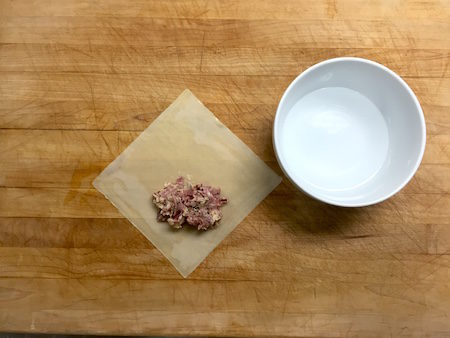
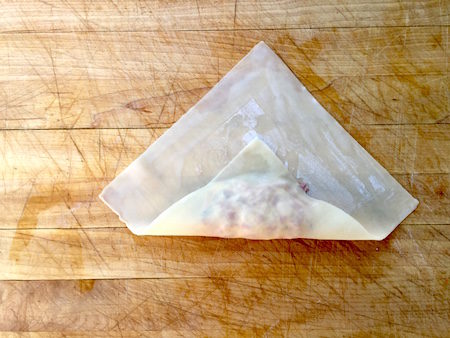
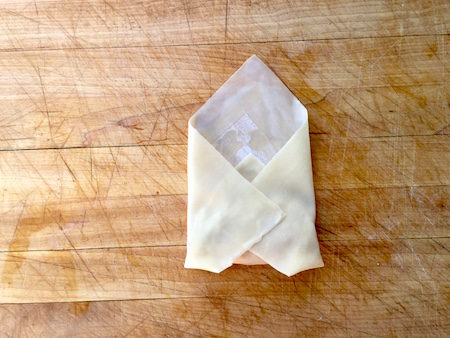
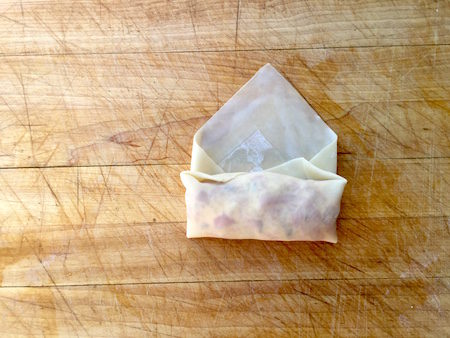
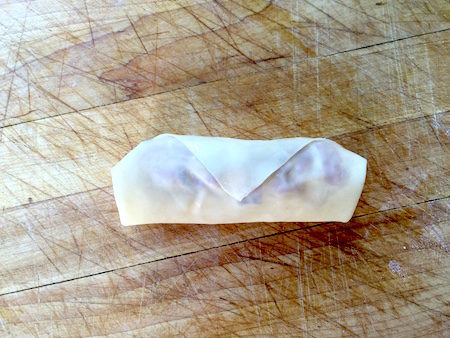


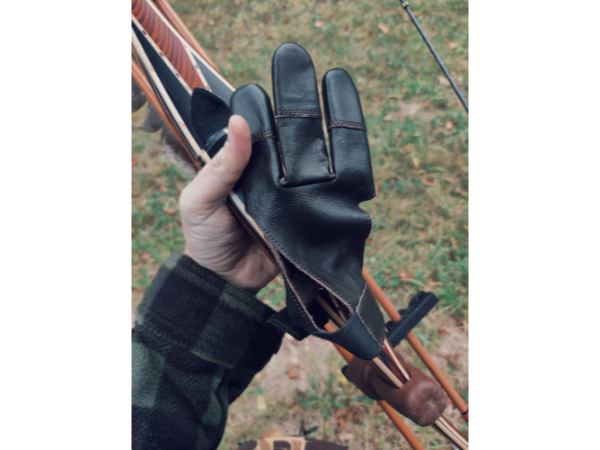

Leave A Comment